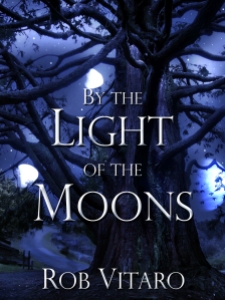If you had told me five years ago that I was going to be an indie author I would have said you were crazy. In fact, I don’t think I even knew the term indie author. I had heard of self-published authors (an industry previously referred to rather unattractively as vanity press), and I knew it was expensive. I was a stay at home mom from a single income family. We certainly didn’t have several thousand dollars to publish a book. So early on in my life I put the idea of becoming a self-published author out of my head. I decided that the merits of my work would speak for themselves and somewhere out there was a publisher who would be willing to give me a chance. I had finished a family advent devotional as gift to my mother and it took me two years to even try querying it with publishers. No luck. I continued to try on and off for several years, still no interest. One publisher was kind enough to refer me to their self-publishing division, but I knew I didn’t have the money it would require to get going so I didn’t follow it up. Then something happened. My husband wrote his first novel. At the same time I had been slaving away at my own novel between working, pregnancy, delivering, breastfeeding and otherwise caring for our new daughter full time. I hadn’t made much progress.
Suddenly this man that I loved and admired who, while very talented, hadn’t written much since high school was 50,000 words towards finishing his first novel. After a period of deep depression, he wanted to do something new, take a risk, so he decided to attempt National Novel Writing Month. He set daily writing goals, designed a tracking spreadsheet, created an outline and on November 1, 2010 off he went and at the end of the month he had an amazing 50,000 manuscript that was only half finished. This full edited and revised manuscript was just published in e-book format just a few months ago, nearly two years later. During the whole process I tried to be encouraging, but provide realistic assessment. He might have to spend a long time querying publishers and putting together proposals. He might need an agent. But I was sure he could do it if he worked hard enough at it. But when the time came to start looking at publishers, he shocked me. He wasn’t even going to attempt traditional publishing. He had decided to indie publish his book for e-reader.
I didn’t understand. Why not at least attempt getting the interest of a regular publisher? He realized that his odds weren’t good and he had done his research well. As a new author who wasn’t already a celebrity he wasn’t likely to get a ton of marketing help from a major publisher, even if they agreed to publish his book. They would set the price and control most of the details like cover and format. The royalty percentages offered would likely be abysmal. Then he told me about Amazon.com and Smashwords. I thought it was a long shot. But indie publishing was a new trend and e-books were a prospering new niche of the literary industry. He wanted to be part of it.
As a life long bibliophile, I still deeply resented e-readers, especially Kindles, which I initially felt were snobby with their proprietary format and lack of lending abilities. I liked the feel of the book in my hand and the idea that this copy was mine. Part of me feared that e-readers were just another gadget that would ultimately lead to people doing less reading just spending more in front of yet another screen. The idea of paying for access to a document just didn’t feel the same. My husband tried to encourage me that my book might also do well if I indie published. But I said that while I was open to using an e-reader format eventually, I wouldn’t publish until I could get a paperback copy to hold in my hand.
Enter Createspace.com
To be continued tomorrow in Part II









